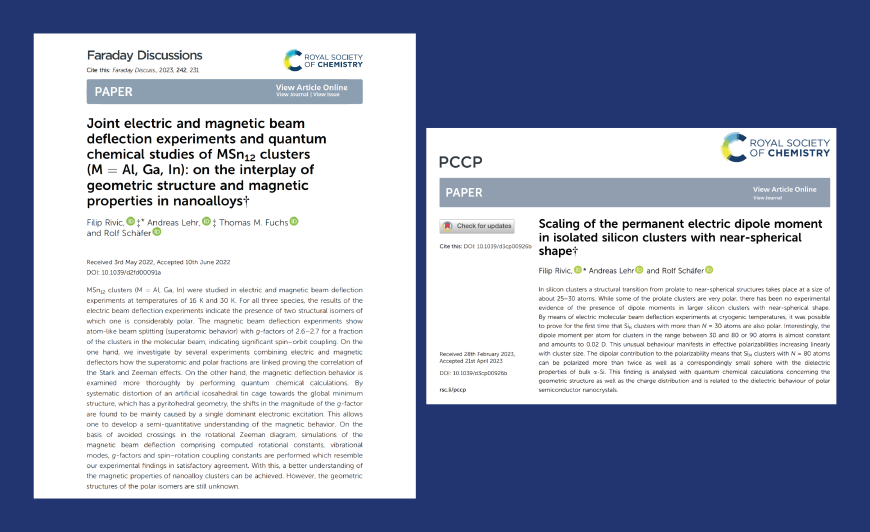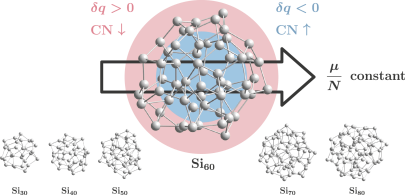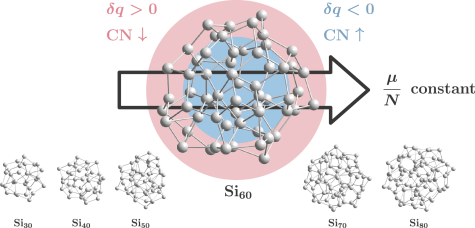Recent Publications
2023/01/01
Our publications in recent months are about a correlated study of the Zeeman and Stark effect on the p-doped tin clusters MSn 12 with M=Al, Ga, In, as well as the observation of linearly scaling dipole moments of quasispherical Si clusters in electric deflection experiments, both supported by modern quantum chemistry.

Molecular beam experiments probing the magnetic and electric deflection are powerful tools for studying the Stark and Zeeman effect of isolated clusters. By combining both experiments, the results not only provide insight into the magnetic and dielectric properties, but can also show a correlation between the Stark and Zeeman effect.
M(120)Sn12 clusters with M = Al, Ga, In have been investigated in electric and magnetic molecular beam deflection experiments at nozzle temperatures of 16 K and 30 K, respectively. Both experiments show two fractions (nonpolar/polar and Brillouin/superatomic) present simultaneously in the molecular beam. In addition, several combined electric and magnetic deflection experimental setups are used to investigate how the superatomic and polar fractions depend on each other. By filtering out one fraction with the first inhomogeneous field, only the remaining fraction is studied in the following deflection experiment. The magnetic beam profiles can be quantitatively simulated based on forbidden crossings in the rotation-Zeeman diagram as a function of rotational constants, vibrational modes, electronic g-factors, and spin-rotation coupling constants. These simulations allow a discrimination of possible structural candidates for the observed superatomic behavior.
The experimentally observed electronic g-factors of g=2.6-2.7 indicate a significant contribution of spin-orbit coupling and could be explained for the first time by a quantum chemical model depending on the global cluster symmetry.
Electric beam deflection experiments were performed on isolated SiN clusters (N = 30 – 90) in the gas phase at cryogenic temperatures of 16 K, in order to study the electric dipole moments and polarizabilities. This range of cluster size is especially interesting, since they show near-spherical shape following the regime of prolate growth well-known for tetrel clusters.
The results of the beam deflection studies reveal, for the first time, that not only there is a non-vanishing electric dipole moment present in these clusters, but also that it scales linearly with the cluster size. The dipolar contribution to the polarizability means that SiN clusters with N = 80 atoms can be polarized more than twice as well as a correspondingly small sphere with the dielectric properties of bulk α-Si. The scaling of the electric dipole moment is attributed to different coordination numbers and partial charges of the individual Si atoms in the cluster which are obtained from a quantum chemical analysis.






